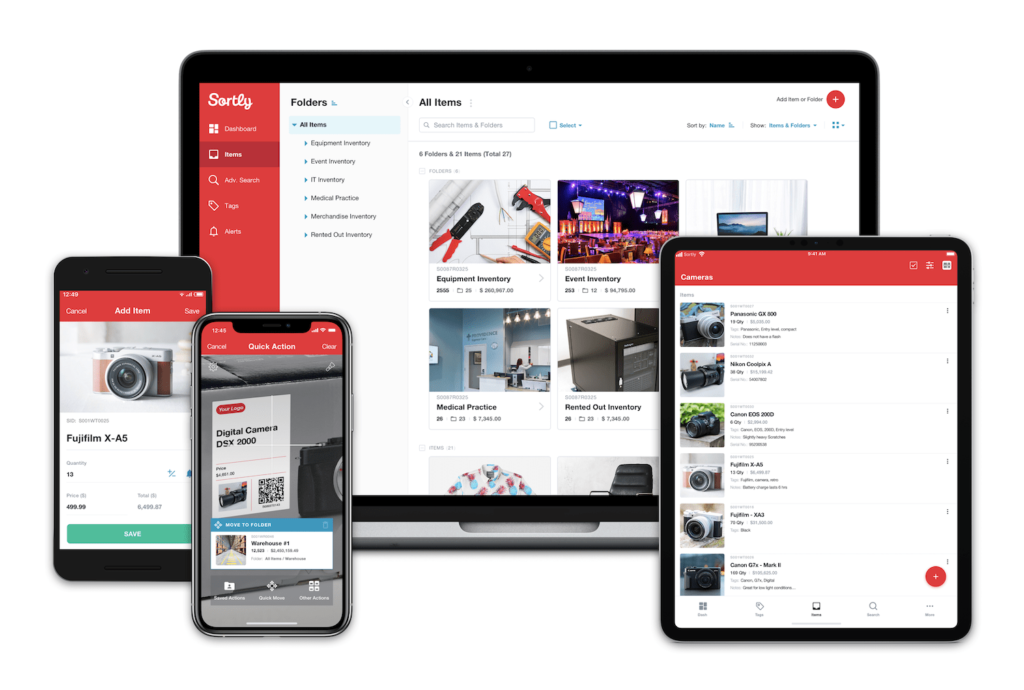Inventory control, also known as stock control, is all about optimizing the inventory your company keeps on hand to ensure happy customers and increased profitability.
How do you control inventory?
You can control inventory by stocking the ideal amount of inventory: enough to easily meet customer demand while keeping ordering and overhead costs as low as possible.
In order to practice inventory control, you need to understand how demand for your product fluctuates from month to month. You can use inventory management software to track and analyze how customer demand for your stock has ebbed and flowed in the past. That information can help you forecast how much of a given product you need to order at different times throughout the year so that you are never overstocked or understocked.
Inventory Control Formulas
While inventory control can be as simple as considering what your customers want and when, many business owners use inventory control formulas to calculate exactly how much of a given item they should carry.
The most common inventory control formulas are economic order quantity (EOQ) and reorder point formula.
Economic Order Quantity (EOQ)
The economic order quantity formula calculates just how much inventory you should order to keep costs low and customer demand satisfied.
The formula for EOQ is: √(2DK / H)
D = Demand, in units, over a year
K = Purchase cost, per unit
H = Holding costs, over a year
Reorder Point Formula
The reorder point formula pinpoints exactly when you should reorder products for ideal inventory control.
The formula for determining the reordering point is: lead time demand in days + safety stock in days.
Lead time demand is calculated using this formula: supply delay + reordering delay, all in days.
Supply delay refers to how many days it takes for your products to arrive once a supplier has accepted your order. Reordering delay refers to how many days it takes for a supplier to accept your order.
Safety stock, that little bit of extra inventory you keep on hand just in case, can be calculated using this formula: (maximum daily usage x maximum lead time in days) – (average daily usage * average lead time in days).
ABC Analysis
If practicing inventory control for every little thing you stock feels totally overwhelming, try using ABC analysis to determine what aspects of your inventory deserve your upmost attention. By triaging your inventory, you can ensure that you never run out of the most profitable and popular items you stock, even if you can’t practice optimal inventory control in every corner of your warehouse, stockroom or storage closet.
Here’s how to organize your inventory according to ABC analysis:
Category A: Identify the items that account for 70% of your revenue, and never run out of these items. This will be about 20% of your inventory.
Category B: Identify the items that account for 25% of your revenue and about 30% of your inventory. While you should try hard to practice optimal inventory control with these items, they are not as essential as those in category A.
Category C: The other half of your stock falls into this category, which accounts for just 5% of your revenue. It’s okay to continue stocking these items, but you don’t need to lose sleep over controlling this inventory.
Inventory Management Software for Inventory Control

Inventory management software can help automate, streamline and simplify your inventory management practices. By properly managing your inventory, it’ll be that much easier to practice effective and optimal inventory control.
Sortly’s inventory app can send you customized alerts and reminders to reorder products before a shortage affects your customers and your bottom line. The app also makes inventory audits a breeze, thanks to an in-app scanner that reads barcodes and QR codes in a split second. You can also generate insightful reports that’ll help you get a handle of what you’ve got, where it is and what it’s costing you.
Ready to get your inventory organized and under control? Start a free trial of Sortly today!




